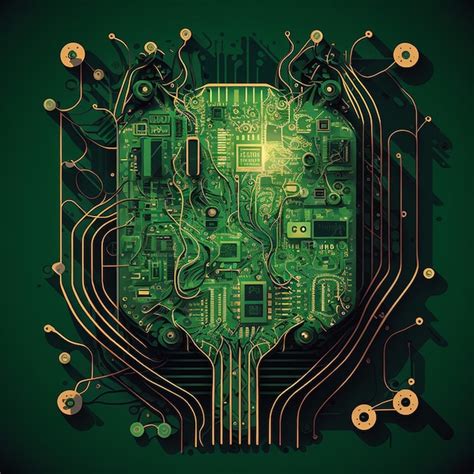Generative AI is at the forefront of what can be described as a technological renaissance. From generating creative writing to designing intricate circuit boards, the transformative power of AI seems boundless. One of the emerging applications of AI is in the field of circuit board design, specifically employing large language models (LLMs) and other generative techniques. This concept excites and intrigues many, but it’s accompanied by a fair share of skepticism. Notably, the discussion around Sonnet 3.5 and other models in this realm illustrates both the potential and the current limitations of AI in performing highly specialized engineering tasks. Let’s delve into the various perspectives on this cutting-edge application.
The value of generative AI in circuit board design is apparent through its ability to handle some of the more mundane aspects of design. For example, tasks like selecting appropriate components, connecting standard modules, or even analyzing datasheets can be streamlined. Imagine an AI receiving a prompt such as ‘design a PCB with a microcontroller, temperature sensor, and USB interface,’ and then generating a preliminary layout. While this would not replace an expert engineer, it holds immense potential to assist and accelerate the design process. Nevertheless, cases where generative AI excels in these automation tasks are often counterbalanced by significant shortcomings in more complex and nuanced design contexts.
As users such as imperio59 and others in the community point out, the hype around certain AI models like Opus and GPT-4 often does not correlate directly to their practical utility in niche and complex applications like circuit board design. Evaluating AI models scientifically requires extensive time and effort, which often isn’t feasible outside academic or corporate research labs. Despite claims of Opus being superior to GPT-4 in certain tasks, consensus is varied and largely dependent on the specific nuances of the task at hand.
A crucial differentiation made by commentators like r2_pilot is the subjective experience of using AI tools. Tools like Claude 3 Opus and Sonnet generate a feeling that the computer is working collaboratively with the user, effectively boosting motivation and productivity. This psychological aspect can play a significant role in user adoption and acceptance, even if the AI isn’t perfect in executing every task flawlessly. For many, the sheer improvement in workflow efficiency justifies their use despite occasional errors.
Technically, there’s skepticism about AI’s ability to replicate the intricate knowledge and experience an engineer brings to the table. As cjk2 humorously notes, AI-generated circuit designs can be like images with missing eyes—often functional on the surface but deeply flawed upon closer inspection. This observation underscores one of the fundamental challenges of generative AI: capturing subtleties, exceptions, and the deep understanding required to produce flawless engineering designs. AI might miss essential connections and produce layouts that are overly costly or inefficient compared to human-created designs.
Interestingly, the challenge isn’t just about getting AI to produce accurate circuits but also making the generated designs comprehensible and usable by human engineers. Scholars such as Terr_ highlight that AI’s perceived eloquence from extensive language training can be misleading. Just because an AI can articulate a concept well doesn’t mean it understands or can implement it effectively. This distinction is crucial when evaluating AI’s capabilities in highly specialized and interconnected domains like circuit board design, where the failure of a single component can render an entire project inoperative.
From a practical standpoint, integrating AI into engineering workflows could involve using it not as a standalone designer but as a sophisticated assistant. As the community suggests, fine-tuning AI models for specific tasks, such as netlist creation or handling context-specific design challenges, could significantly enhance their utility. This hybrid approach, combining human expertise with AI-generated suggestions, could pave the way for more reliable and efficient design processes. For instance, AI could automate certain repetitive tasks, allowing engineers to focus on more critical design decisions and innovation.
Lastly, while the primary focus of discussions tends to be on AI’s current limitations, the broader perspective, as mentioned by users like HanClinto, emphasizes AI’s potential for rapid evolution. Exploring different architectural approaches, such as diffusion-based models for generating code-like structures, could address some of the present shortcomings. The undercurrent of optimism within the engineering community suggests that while LLMs and other generative AIs are not yet perfect, they are progressively improving, and their role in future engineering could be transformative. With continued research, iterative improvements, and possibly even integrating adversarial learning techniques, AI’s capability in specialized engineering applications is poised to expand significantly.
In conclusion, while generative AI holds promise for revolutionizing circuit board design, it is not without its challenges. The community’s insights and practical experiences underline a reality where AI can support but not replace human expertise. As this technology evolves, its integration into engineering tasks promises to augment productivity and open new possibilities, contingent on overcoming current limitations through dedicated research and innovation.


Leave a Reply